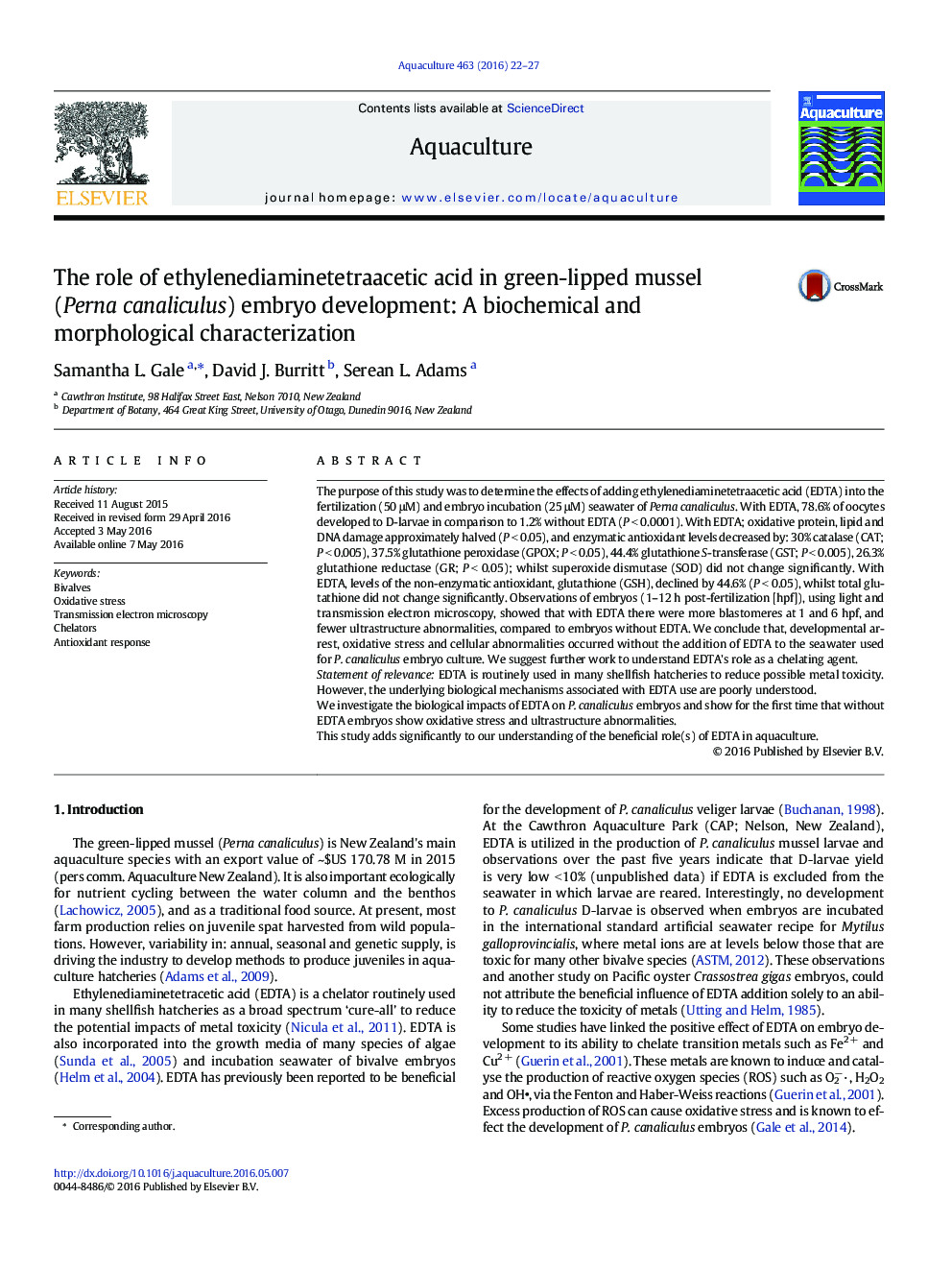| کد مقاله | کد نشریه | سال انتشار | مقاله انگلیسی | نسخه تمام متن |
|---|---|---|---|---|
| 2421356 | 1552824 | 2016 | 6 صفحه PDF | دانلود رایگان |

• Addition of ethylenediaminetetraacetic acid (EDTA) to incubation seawater resulted in 60% D-larvae yield of Perna caniliculus.
• EDTA addition halved oxidative stress damage to lipids, proteins and DNA and decreased the enzymatic antioxidant defence response.
• EDTA is hypothesized to have a dual detoxification and bioavailability/provisioning role in early Perna canaliculus development.
• The role of metals and their bioavailability should be carefully considered in shellfish husbandry and aquaculture practices.
The purpose of this study was to determine the effects of adding ethylenediaminetetraacetic acid (EDTA) into the fertilization (50 μM) and embryo incubation (25 μM) seawater of Perna canaliculus. With EDTA, 78.6% of oocytes developed to D-larvae in comparison to 1.2% without EDTA (P < 0.0001). With EDTA; oxidative protein, lipid and DNA damage approximately halved (P < 0.05), and enzymatic antioxidant levels decreased by: 30% catalase (CAT; P < 0.005), 37.5% glutathione peroxidase (GPOX; P < 0.05), 44.4% glutathione S-transferase (GST; P < 0.005), 26.3% glutathione reductase (GR; P < 0.05); whilst superoxide dismutase (SOD) did not change significantly. With EDTA, levels of the non-enzymatic antioxidant, glutathione (GSH), declined by 44.6% (P < 0.05), whilst total glutathione did not change significantly. Observations of embryos (1–12 h post-fertilization [hpf]), using light and transmission electron microscopy, showed that with EDTA there were more blastomeres at 1 and 6 hpf, and fewer ultrastructure abnormalities, compared to embryos without EDTA. We conclude that, developmental arrest, oxidative stress and cellular abnormalities occurred without the addition of EDTA to the seawater used for P. canaliculus embryo culture. We suggest further work to understand EDTA's role as a chelating agent.Statement of relevanceEDTA is routinely used in many shellfish hatcheries to reduce possible metal toxicity. However, the underlying biological mechanisms associated with EDTA use are poorly understood.We investigate the biological impacts of EDTA on P. canaliculus embryos and show for the first time that without EDTA embryos show oxidative stress and ultrastructure abnormalities.This study adds significantly to our understanding of the beneficial role(s) of EDTA in aquaculture.
Journal: Aquaculture - Volume 463, 1 October 2016, Pages 22–27